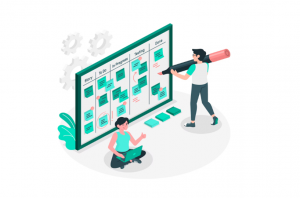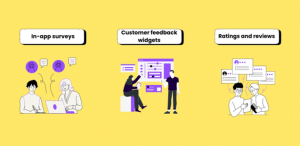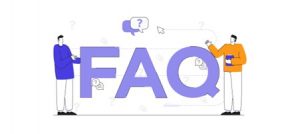

As digital competition intensifies, user experience has become the ultimate differentiator. With countless alternatives just a click away, even the smallest misstep can cost you a customer. Today’s users demand fast, intuitive, and frictionless interactions—and they won’t hesitate to abandon a product that doesn’t meet those expectations. This is where usability testing becomes indispensable. It’s a strategic, user-focused approach to uncovering design flaws, navigation issues, and user frustrations before they snowball into lost customers or missed revenue. Yet despite its proven value, many still believe that usability testing is an expensive, complex process reserved for large corporations with vast budgets and in-house UX teams. In reality, nothing could be further from the truth—usability testing is both accessible and essential for all businesses.

What is Usability Testing?
Usability testing is a method used to evaluate how easy and intuitive a product is by observing real users as they interact with it. Whether it’s a website, mobile app, SaaS platform, or even a physical product, usability testing helps identify friction points, confusing interfaces, and design flaws that can frustrate users and drive them away.
The process can be as simple as watching a user attempt to complete tasks on your website or as advanced as using heatmaps, screen recordings, and biometric data. The goal is always the same – improve user satisfaction, streamline functionality, and increase conversions.
The Myth: Usability Testing is Only for Big Companies
Large enterprises have long embraced usability testing as part of their product development cycles. Tech giants like Google, Amazon, and Apple invest heavily in it to ensure they deliver seamless experiences. This has led to the misconception that usability testing is expensive, complex, and only suitable for companies with large UX teams and budgets.
Small businesses, startups, and solo entrepreneurs often believe they can’t afford usability testing, or that their product isn’t “big enough” to warrant it. The reality? Usability testing is even more critical for smaller organizations.
Usability Testing for Small Businesses: Why It’s More Important Than You Think
Small businesses usually don’t get a second chance. If a user visits your website and finds it confusing, slow, or poorly designed, they’ll leave—and likely never return. Usability testing helps you make that crucial first impression count.
When resources are limited, every dollar counts. Usability testing helps you avoid costly design mistakes by identifying problems early. Fixing a usability issue in the design phase costs significantly less than doing so post-launch.
You might think your product is intuitive, but your users may see things differently. Observing actual users interact with your product reveals blind spots and opportunities for improvement you might never have considered.
For small businesses relying on every lead or sale, usability improvements can directly impact your bottom line. Optimizing your user experience through usability testing can boost conversion rates, reduce bounce rates, and increase customer satisfaction.
A polished, user-friendly website or app makes your business look more professional. It builds trust with users who may be discovering your brand for the first time. Usability testing ensures your digital presence reflects your brand values and professionalism.

Usability Testing Doesn’t Have to Break the Bank
Contrary to popular belief, usability testing doesn’t require a large budget, a lab, or high-end equipment. Here are cost-effective methods that make it accessible to businesses of any size:
Approach people in coffee shops, co-working spaces, or online communities and ask them to complete simple tasks on your product. It’s informal, quick, and incredibly insightful.
Tools like Maze, UsabilityHub, Lookback, or PlaybookUX allow you to conduct tests remotely, often with built-in analytics and heatmaps. Many offer free or affordable plans.
Your current users are a great testing pool. Offer them incentives like discounts or early access in exchange for participating in usability tests.
Even free screen recording tools like Loom or OBS Studio can help you observe how users navigate your platform, where they click, and where they get stuck.
Simple tools like Hotjar or Qualaroo can collect feedback directly from users while they engage with your website or app.

Common Usability Issues Small Businesses Face
Without usability testing, these frequent problems often go unnoticed:
How to Start Usability Testing on a Small Scale
If you’re convinced usability testing is valuable but unsure where to begin, here’s a simple plan:
Case Study: A Small eCommerce Brand That Made Big Gains
A small handmade jewellery business with an online store noticed high cart abandonment rates. They assumed it was due to pricing or shipping. But after conducting a few usability tests using friends and existing customers, they discovered that users were confused by the multi-step checkout process.
By simplifying the process and adding clearer progress indicators, their cart abandonment dropped by 35% in a month. This small investment in usability testing led to measurable improvements in sales and customer satisfaction.

Bottom Lines: Usability is Everyone’s Responsibility
You don’t need a million-dollar UX team to care about your users’ experience. In fact, smaller businesses often have the upper hand—they’re more agile, more adaptive, and can respond to user feedback faster than large enterprises. Usability testing isn’t just for “the big companies”—it’s a vital strategy for any business that values its customers, protects its reputation, and aims for sustainable growth. In an age where digital experiences shape brand loyalty, making your product easy to use is no longer a competitive advantage—it’s a customer expectation.
At BriskWinIT Solutions, we believe usability testing should be accessible, insightful, and actionable for businesses of all sizes. Whether you’re launching a new platform or refining an existing one, our usability testing services help you uncover friction points, improve user journeys, and drive meaningful results.
So, the next time you hear someone say usability testing is just for big companies, you’ll know better. And with BriskWinIT Solutions by your side, you’ll be testing smarter, growing faster, and delivering user experiences your customers will love.

Frequently Asked Questions (FAQ)
Usability testing is a research method used to evaluate how easily and effectively users can interact with a product—such as a website, app, or software. It involves observing real users as they attempt to complete specific tasks, allowing you to identify pain points, confusion, or inefficiencies in your user experience.
Not at all. While big companies may have dedicated UX teams, usability testing is just as important—if not more—for small businesses. Smaller brands often depend on first impressions and limited customer touchpoints. Testing early helps avoid costly redesigns and keeps customers engaged from the start.
Usability testing doesn’t have to be expensive. Affordable and even free tools are available for screen recording, remote testing, and feedback collection. Plus, BriskWinIT Solutions offers scalable usability testing services personalized to fit your budget and business goals—making expert UX guidance accessible to everyone.
There are several types, including:
BriskWinIT Solutions can help you choose the right approach for your needs.
You don’t need hundreds of testers to gain valuable insights. Research shows that testing with just 5–7 users can uncover up to 85% of usability issues. Focused, smaller-scale tests are often more cost-effective and easier to manage.
Start with high-impact areas like:
These areas directly influence user retention and sales, so it’s important they work flawlessly.
Usability testing should be ongoing—especially after major design changes, new feature rollouts, or user feedback trends. Regular testing ensures you’re always aligned with user expectations and can make incremental improvements.
Usability testing helps you:
BriskWinIT Solutions offers customized usability testing services. From planning and test design to execution and reporting, we provide actionable insights to help you optimize your product’s performance and user experience—without the enterprise price tag.
Getting started is easy. Visit our website or contact our team to schedule a free consultation. We’ll assess your current product, recommend a testing approach, and help you launch your first usability testing session—fast, affordable, and impactful.
We’d Love to Hear from You!
Usability testing is a journey—one that every business, big or small, can benefit from. We’ve shared our insights, but now we want to hear your thoughts. Have you tried usability testing before? What challenges or successes have you experienced?
Read the full blog above and drop your questions, comments, or stories in the comment section. Let’s start a conversation—your perspective could help others navigating the same path. And if you’re ready to explore usability testing for your business, BriskWinIT Solutions is here to help you get started!